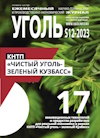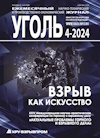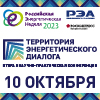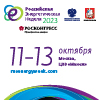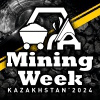
SOCIAL & ECONOMIC ACTIVITY
Original Paper
UDC 338.12 © L.N. Babkina, T.P. Skufina, V.V. Levites, O.V. Skotarenko, E.S. Khatsenko, 2022
ISSN 0041-5790 (Print) • ISSN 2412-8333 (Online) • Ugol’ – Russian Coal Journal, 2022, № 6, pp. 35-40
DOI: http://dx.doi.org/10.18796/0041-5790-2022-6-35-40
Title
Мathematical tools for selecting strategies for sustainable economic development of the regions of the Аrctic zone of the Russian Federation
Authors
Babkina L.N.1, Skufina T.P.2, Levites V.V.3, Skotarenko O.V.3, Khatsenko E.S.4
1North-Western Institute of Management, Branch of the Russian Presidential Academy of National Economy and Public Administration attached to the President of the Russian Federation
2Luzin Institute for Economic Studies Federal Research Centre «Kola Science Centre of the Russian Academy of Sciences», Apatity,184209,Russian Federation
3Murmansk Arctic State University Murmansk, 183038, Russian Federation
4Murmansk regional government, Murmansk, 183038, Russian Federation
Authors Information
Babkina L.N., Doctor of Economics Sciences, Professor, Professor of the Department of State and Municipal Administration, Saint Petersburg, 199178, Russian Federation, e-mail: babkina-ln@ranepa.ru
Skufina T.P., Doctor of Economics Sciences, Professor, Chief Researcher,e-mail: skufina@gmail.com
Levites V.V.,PhD of Philosophy (Pedagogical), Decan of the Faculty of Mathematical and Natural Sciences, e-mail: levites.vera@masu.edu.ru
Skotarenko O.V., Doctor of Economics Sciences, Associated professor, Professor of the Department of Economics and Management, e-mail: ksen-13@mail<st1< a="">:personname >.ru
Khatsenko E.S., PhD of Philosophy (Economics), Associated professor, Chief Of Youth department, e-mail: egor-mur@bk<st1< a="">:personname >.ru
Abstract
The article presents three three-factor models of dependence of the gross regional product as an effective indicator of economic activity on factor indicators describing the economic condition of certain sectors and activities in the region. These factor indicators are chosen from the list of main socioeconomic indicators from annual Russian government statistics reports. To study the eco-nomic dynamics in the selected sectors and activities in four Russian Arctic regions, we compiled statistical arrays for 15 years, from 2005 to 2019. The models helped carry out a correlation-regression analysis based on formulated and calculated equations of regression for each Arctic region, namely, Murmansk Oblast and three Autonomous Okrugs: Nenets, Yamalo-Nenets, and Chukotka. The calculation results showed that the models were accurate and reliable and helped divide all of the factor indicators into several groups by correlation coefficient value. For further studies and in order to identify promising sectors and activities, two criteria were used to select factor indicators: a correlation coefficient above 0.81, which shows a considerable influence on the gross regional product, and an elasticity coefficient above 0.5%, which shows that a change in a factor indicator by 1% will result in a more than 0.5% change in the gross regional product. As a result, there were only three factor indicators left for each region. Those should be called key factors of strategic development. Based on those indicators, new models were developed for each region, accompanied by short-term projections of change in the factor indicators, which made it possible to make similar projections of change in the gross regional product.
Keywords
The arctic zone, Northern region, Economic space, Socio-economic forecasting, Comprehensive development plan.
References
1. Granber A.G., Suslov V.I.& Suspitsyn S.A. Economic and mathematical studies of mono-regional systems.Regional`naya ekonomika i sotciologiya, 2008, (2), pp. 120-150. (In Russ.).
2. Novoselov A.S., Itsenkov O.O. & Ubozhenko E.E. Economic challenges of regions and industrial complexes. Problemy sovremennoj ekonomiki, 2021, (1), pp. 115-119. (In Russ.).
3. Babkina L.N. & Skotarenko O.V. Specific features of the qualimetric approach in regional studies Nauchno-tehnicheskie vedomosti Sankt-Peterburgskogo gosudarstvennogo politehnicheskogo universiteta. 2013, (5), pp. 161-165. (In Russ.).
4. Skotarenko O.V. New methods to assess the level of social and economic development of Russian regions. Vestnik MGTU - Scientific Journal of MSTU: Social?no-ekonomicheskie nauki, 2012, (1), pp. 220-229. (In Russ.).
5. Zaychenko I.M., Kalinina O.V. & Gutman S.S. Labor resources of the Far North territories: Problems and prospects / Proceedings of the 28th International Business Information Management Association Conference - Vision 2020: Innovation Management Development Sustainability and Competitive Economic. 2016. Growth. Available at: https://www.scopus.com/inward/record.uri?eid=2-s2.0-85013952661&partnerID=40&md5=bda7edf13ac09f3fd66efa18a3542a77 (accessed 15.05.2022).
6. Romashkina G.F., Didenko N.I. & Skripnuk D.F. Socioeconomic modernization of Russia and its Arctic regions. Studies on Russian Economic Development, 2017, (10), pp. 22-30.
7. Babkin N., Bespalova S., Senetskaya L. & Skotarenko O. Tools for digitalization of economic processes for supporting management decision-making in the Arctic region / IOP Conference Series: Earth and Environmental Science. 2019. Vol. 302. Is. 1. 6 August. No 012147 4th International Scientific Conference on Arctic: History and Modernity; Saint Petersburg; Russian Federation 151045.
8. Bell D. The cultural contradictions of capitalism. 1978 (New York Basic books Cop XXXIV).
9. Innis H. The idea file of Harold William Christian Toronto. 1980. (etc. Univ of Toronto press Cop XXI).
10. Clark C. Bioeconomic modelling and fisheries management. 1985. (New York etc. Wiley XII).
11. Mun T. England's treasure by forraing trade. 1985. (New York London Macmillan XVI).
12. Myrdal G. Historien an American dilemma. 1987. (Stockholm SNS forl Cop).
13. Solow R. Monopolistic competition and macroeconomic theory Cambridge. 1999. (Cambridge univ press).
14. Heckscher E. Texter i urval av Rolf G.H. Henriksson och Mats Lundahl. 2003. (Stockholm Timbro Cop).
15. Azgaldov G. Applied Qualimetry: Its origins, errors and misconceptions. Benchmarking: An International Journal, 2011, (3), pp. 428-444.
16. Kozin M., Plotnikov V. & Skotarenko O. Assessment of challenges, threats, andprospects in development of cities and towns in the Arctic zone 2019 IOP Conference Series: Earth and Environmental Science. Vol. 302. Is. 1. 6 August No 012103 4th International Scientific Conference on Arctic: History and Modernity; Saint Petersburg 151045.
17. Regions of the Russian Federation. Social and economic indicators-2020. Moscow, Federal State Statistics Service (Rosstat), 2020, 1242 p. Available at: https://rosstat.gov.ru/storage/mediabank/LkooETqG/Region_Pokaz_2020.pdf (accessed 15.05.2022). (In Russ.).
18. Kozin M.N., Skotarenko O.V., Babkina L.N. Challenges and prospects for the development of the energy sector in the Arctic zone. Ekonomika i upravlenie, 2019, (7), pp. 31-38. (In Russ.).
Acknowledgements
The study includes the results obtained through the RNF grant No. 19-18-00025
For citation
Babkina L.N., Skufina T.P., Levites V.V., Skotarenko O.V. & Khatsenko E.S. Econometric modeling of the sectoral program for the development and functioning of coal-industrial clusters in the regional economy.Ugol’, 2022, (6), pp. 35-40. (In Russ.). DOI: 10.18796/0041-5790-2022-6-35-40.
Paper info
Received May 18, 2022
Reviewed May 20, 2022
Accepted May 23, 2022


